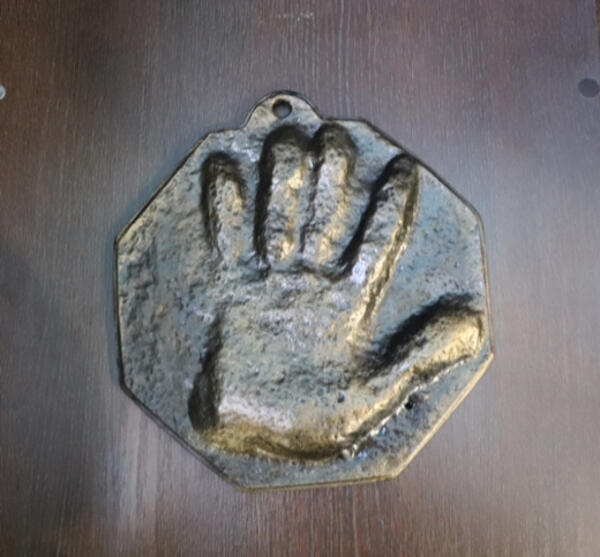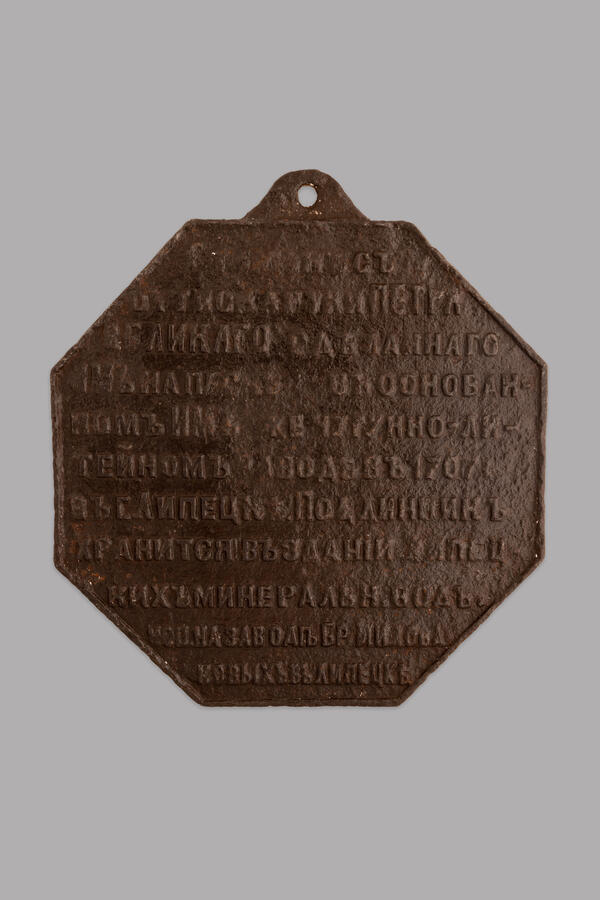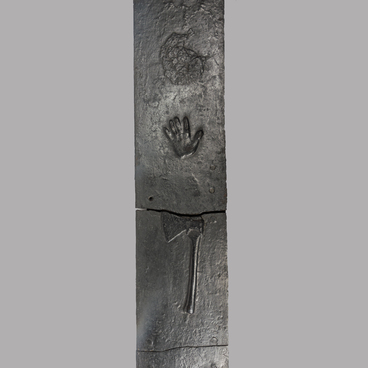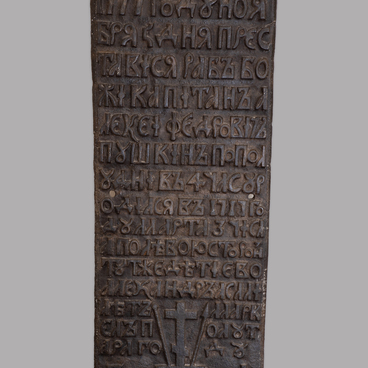The exhibition of the Lipetsk Regional Museum of Local Lore includes an octagonal medallion with a handprint of Emperor Peter I. It was copied from an 18th-century cast-iron plate, which was cast at one of the Lipsky ironworks.
The medallion was made at the iron foundry of the Milovanov brothers in Lipetsk in the middle of the 19th century. People described such an octahedron as a Lipetsk souvenir, and anyone could buy one at the Lipetsk Mineral Waters resort as a memory of visiting the city.
The Lipetsk resort is one of the oldest in Russia. The official opening date of the resort is considered to be 1805, when Emperor Alexander I wrote “Let it be” on the report of the first Minister of Internal Affairs, Count Viktor Pavlovich Kochubey, who proposed to arrange a resort in Lipetsk.
The resort was famous for healing mineral water and mud containing a lot of iron. They were known throughout the Russian Empire. At the beginning of the 19th century, when the Napoleonic wars were already going on in Europe and the way to the fashionable Western European resorts was closed, the nobility from the capital began to relax and treat their illnesses in places like this one. At that time, famous writers, musicians and actors visited the city. Later, in wartime, Russian soldiers and officers came to the resort to heal their wounds.
The octagonal medallion of the Milovanovs was two-sided and, despite its small size, weighed almost four kilograms. On one side, the masters copied the handprint of the great Russian monarch, on the reverse side they cast the inscription: “A photograph from the handprint of Peter the Great, made by him on the sand, in the iron foundry founded by him in 1707 in Lipetsk. The original is stored in the building of the Lipetsk Mineral Waters. Performed at the factory of the Milovanov brothers in Lipetsk.”
Such medallions were quite common so they have been preserved and are currently exhibited in many Russian museums: in the State Historical Museum in Moscow, in the Museum of Weapons and the Demidov Museum in Tula, in the Azov Museum-Reserve, in the Tambov and Voronezh Museums of Local Lore. It is known that even the house of Peter I in the Netherlands has such an exhibit.
The medallion was made at the iron foundry of the Milovanov brothers in Lipetsk in the middle of the 19th century. People described such an octahedron as a Lipetsk souvenir, and anyone could buy one at the Lipetsk Mineral Waters resort as a memory of visiting the city.
The Lipetsk resort is one of the oldest in Russia. The official opening date of the resort is considered to be 1805, when Emperor Alexander I wrote “Let it be” on the report of the first Minister of Internal Affairs, Count Viktor Pavlovich Kochubey, who proposed to arrange a resort in Lipetsk.
The resort was famous for healing mineral water and mud containing a lot of iron. They were known throughout the Russian Empire. At the beginning of the 19th century, when the Napoleonic wars were already going on in Europe and the way to the fashionable Western European resorts was closed, the nobility from the capital began to relax and treat their illnesses in places like this one. At that time, famous writers, musicians and actors visited the city. Later, in wartime, Russian soldiers and officers came to the resort to heal their wounds.
The octagonal medallion of the Milovanovs was two-sided and, despite its small size, weighed almost four kilograms. On one side, the masters copied the handprint of the great Russian monarch, on the reverse side they cast the inscription: “A photograph from the handprint of Peter the Great, made by him on the sand, in the iron foundry founded by him in 1707 in Lipetsk. The original is stored in the building of the Lipetsk Mineral Waters. Performed at the factory of the Milovanov brothers in Lipetsk.”
Such medallions were quite common so they have been preserved and are currently exhibited in many Russian museums: in the State Historical Museum in Moscow, in the Museum of Weapons and the Demidov Museum in Tula, in the Azov Museum-Reserve, in the Tambov and Voronezh Museums of Local Lore. It is known that even the house of Peter I in the Netherlands has such an exhibit.




